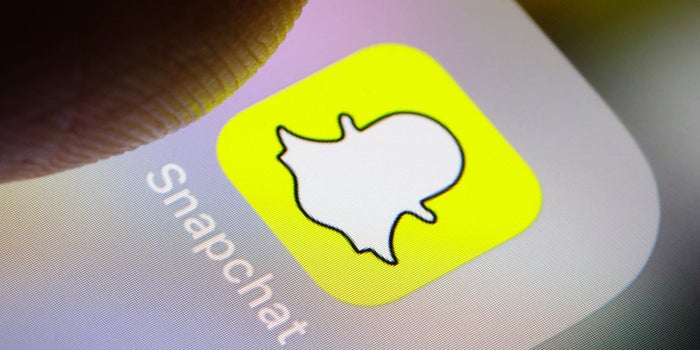
You can’t please everybody, and the people who design tech interfaces know this truth all too well.
These folks have to consider conflicting suggestions from users to improve the experience on their favorite platforms, but their customers aren’t the only ones whose preferences they have to take into account.
They’ve got advertisers who want their images and videos prominently displayed. They’ve got academics, activists and governments scrutinizing how tech features manipulate the masses. They’ve got various other egos, from investors to executives, chiming in with their two cents. And they’ve got competitors that they’re trying to either copy or out-innovate.
Related: Why These People and Brands Are Fed Up With Facebook
The users who express their grievances with updates don’t consider this. It seems that every time a major tech platform introduces a new feature or redesign, people get mad. Think this is an exaggeration? Check out these tweets from 2007 through 2012 containing the words “hate Facebook update.” Or these tweets containing “Instagram changes suck” from 2015 through 2017. Or the most recent tweets about “the new Google calendar.”
Or take Snapchat, which recently rolled out a redesign of its interface that separates brands from friends and fills a tab that used to house stories with branded content. Putting partner content front-and-center, in a section of the app users habitually visit, was meant to boost engagement with that paid content. In fact, the number of daily users watching stories from publishers grew 40 percent in tests of the redesigned version of the app vs. in the old version.
It pissed people off. A Change.org petition titled “Remove the new Snapchat Update” circulated and received upwards of 1.23 million signatures. On Feb. 21, 2018, celebrity influencer Kylie Jenner tweeted that she no longer uses Snapchat to her 24.5 million Twitter followers. The comment tanked parent company Snap’s market valuation — it fell by $1.3 billion in less than a day. Jenner, mind you, was the most popular personon Snapchat for a period in 2015.
Ironically, content about Kylie Jenner was among the featured posts on Snapchat Discover on Feb. 22 and 23 — “still love you tho!”
In the past, Snapchat has listened to users’ requests and implemented changes, such as when it stopped autoplaying consecutive stories in late 2016. And it listened to the Change.org petitioners, too, posting a response on Feb. 20 (before Jenner dropped her damning tweet). “We hear you,” Snap told the concerned users. “We completely understand the new Snapchat has felt uncomfortable for many.”
Related: 5 Stats That Show Snap May Be Turning Its Struggling Business Around
Snap then explained the goals it had with the redesign: To make interactions among friends more accessible and for both friend and branded content to surface according to what the user is most likely to want to see. It also announced that tabs in both the Friends and Discover sections are on their way, to allow users to customize what they see.
“This new foundation is just the beginning, and we will always listen closely to find new ways to make the service better for everyone,” the statement concluded. “We are grateful for your enthusiasm and creativity. We are very excited for what’s ahead.”
Although user feedback would suggest that Snapchat really messed up with its new redesign, it’s getting at least two things right with this statement. The company has told its users it’s listening to them, and it’s explained why it made the changes it did.
That’s what Basecamp designer Jonas Downey advised in a Medium post, “How to launch software changes without pissing people off,” last March:
“It’s bad enough to be forced into an update you didn’t agree to, but it’s even worse if you have no idea what happened or why things changed. Make sure you have a way to introduce and explain what’s new when you launch, either via in-app announcements, a mailing list, a blog or whatever method you have to communicate with customers.”
Developers and users need to empathize with each other. It’s hard to roll out a redesign that won’t be jarring to users. It’s also difficult (not impossible, but it requires extra work) for companies to maintain two versions — old and new — just so users can choose to opt out of an update.
TechCrunch contributor and FreshBooks Creative Director Jeremy Bailey suggeststaking a proactive approach to considering customer feedback. Companies should research customer wants and needs before and during development to prevent backlash upon a rollout.
“Design teams must learn to become a group of ethnographers, learning to spot the unmet needs of customers and adapting to meet their concerns,” Bailey writes, noting that “every product design — or redesign — should start with customer research, generally in the form of interviews to understand customer needs and gather insights that inform a ‘problem statement’ — a series of issues that must be addressed in the design process.”
It’s also important for companies to be receptive when users point out unforeseen issues with product updates, says Sara Wachter-Boettcher, author of Technically Wrong: Sexist Apps, Biased Algorithms, and Other Threats of Toxic Tech.
“Oftentimes, those complaints highlight real failures,” Wachter-Boettcher told Entrepreneur in an email, “failures that could harm people or leave them open to abuse.”
She sites Snapchat’s June 2017 Snap Maps update as an example of a new feature that users flagged as having potential for abuse in the form of stalking, as well as a Google Maps update that associated walking distance with calories burned, depicted with cupcake symbols. She explains how users found the latter update to be harmful to people with eating disorders or who could not or chose not to walk, not to mention that calorie counts aren’t the best indicator of fitness, among other issues.
“Most of all, they complained that this is not something they signed up for,” she says. “The app was meant to map things. They hadn’t opted in to a health tracker. Google turned off the features.”
A final example she provides happened with Twitter in early 2017: The company temporarily stopped notifying users when they were added to Twitter Lists. Women, in particular, wanted to know, “because lists are one way trolls and abusers share targets” by adding women to lists with names such as “stupid bitches.” Twitter reinstated notifications after people raised these concerns.
“If companies care about the safety and wellbeing of their users, then they can’t write off criticism that might seem superficial or change-averse at first blush,” Wachter-Boettcher says. “I think that loud, massive outcry is actually a gift to a tech company. It’s free feedback that may allow them to uncover a problem that they hadn’t anticipated, before it hurts people.”
source:-entrepreneur



